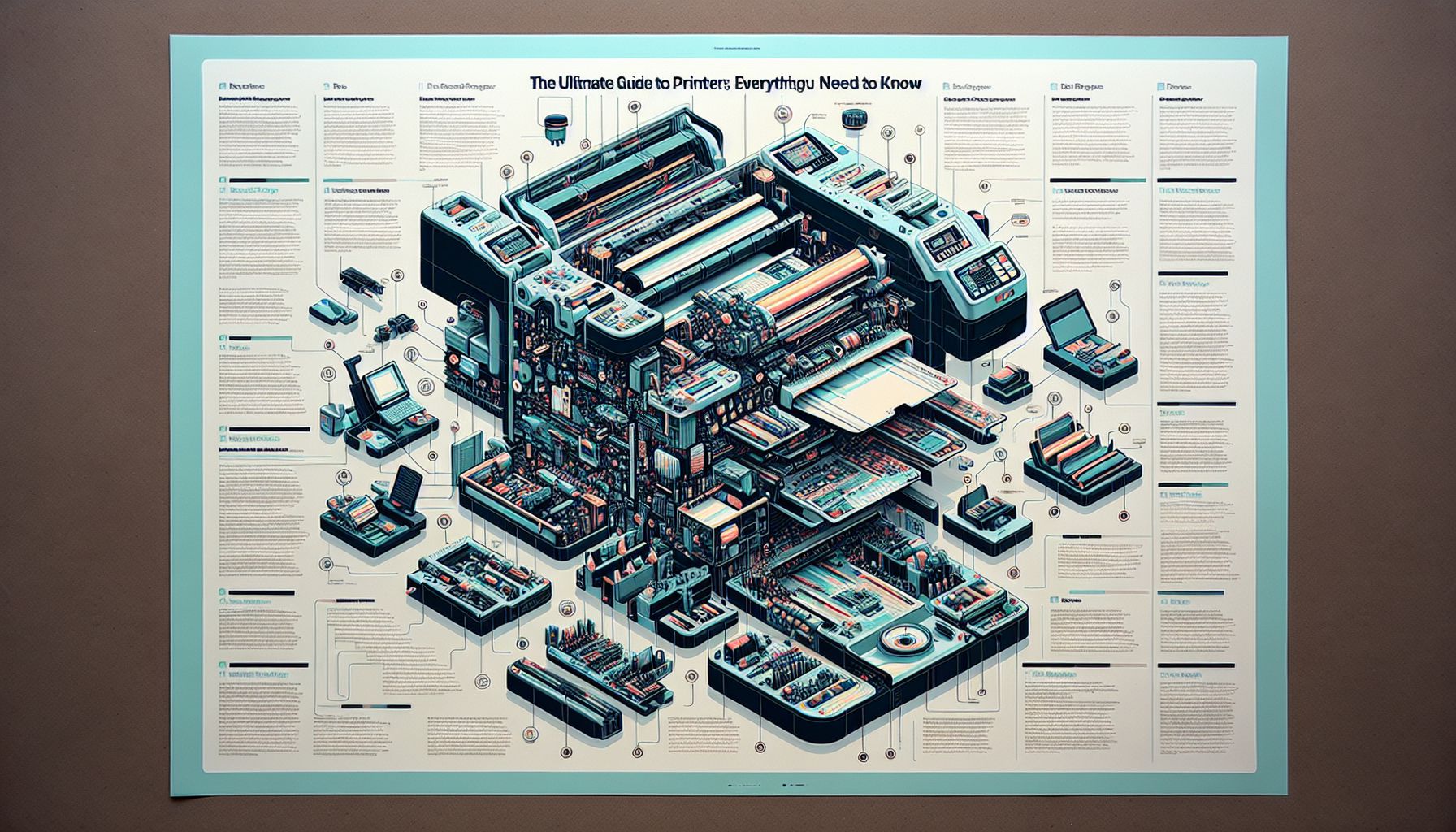In today’s digital age, printers have become a staple in both homes and offices around the world. From printing documents and photos to creating labels and stickers, printers offer a wide range of capabilities that make our lives easier. However, with so many different types of printers available on the market, it can be overwhelming to choose the right one for your needs. In this comprehensive guide, we will explore everything you need to know about printers to help you make an informed decision.
Types of Printers
There are several types of printers available, each with its unique strengths and weaknesses. The most common types of printers include:
-
Inkjet Printers: Inkjet printers are the most popular type of printer for home and small office use. They work by spraying liquid ink onto paper to create text and images. Inkjet printers are known for their high-quality output and ability to print in color.
-
Laser Printers: Laser printers use a toner cartridge and a laser beam to transfer text and images onto paper. They are a popular choice for offices due to their fast printing speeds and lower cost per page. Laser printers are ideal for printing high volumes of black and white documents.
-
All-in-One Printers: All-in-one printers combine the functions of a printer, scanner, copier, and sometimes a fax machine into one device. They are versatile and space-saving, making them a popular choice for home users and small businesses.
-
Photo Printers: Photo printers are designed specifically for printing high-quality photos. They use special ink cartridges and paper to produce vibrant, detailed images. Photo printers are great for photography enthusiasts and professionals who require exceptional print quality.
-
Dot Matrix Printers: Dot matrix printers use pins to strike an inked ribbon, transferring characters onto paper in a series of dots. While they are less common today, dot matrix printers are still used in specialized applications such as printing receipts and invoices.
Factors to Consider When Choosing a Printer
When shopping for a printer, there are several factors to consider to ensure you choose the right one for your needs. Here are some key things to keep in mind:
-
Printing Needs: Consider what you will be using the printer for. If you primarily print text documents, a monochrome laser printer may be the best choice. If you print a lot of photos, a color inkjet or photo printer would be more suitable.
-
Printing Speed: If you have high-volume printing needs, look for a printer with a faster printing speed. Laser printers are generally faster than inkjet printers, making them a better choice for offices with heavy printing demands.
-
Print Quality: The print quality of a printer is measured in dots per inch (DPI). The higher the DPI, the better the print quality. If you need crisp, clear text and vibrant colors, opt for a printer with a high DPI rating.
-
Connectivity: Consider how you will be connecting to the printer. Most modern printers offer wireless connectivity options such as Wi-Fi and Bluetooth, making it easy to print from any device.
-
Size and Capacity: Think about where you will be placing the printer and how much space you have available. Additionally, consider the paper capacity of the printer and whether it meets your printing needs.
-
Cost: While the upfront cost of a printer is important, don’t forget to factor in ongoing costs such as ink or toner cartridges. Some printers have a higher cost per page than others, so it’s essential to consider the total cost of ownership.
Printer Maintenance and Care
To ensure your printer remains in optimal condition and continues to produce high-quality prints, it’s essential to perform regular maintenance and care. Here are some tips to keep your printer running smoothly:
-
Clean the Printer: Dust and debris can accumulate inside the printer, affecting print quality. Periodically clean the printer with a soft, lint-free cloth to remove any dirt or residue.
-
Use Genuine Ink or Toner Cartridges: To prolong the life of your printer and maintain print quality, always use genuine ink or toner cartridges recommended by the manufacturer.
-
Update Printer Drivers: Keep your printer drivers up to date to ensure compatibility with your operating system and resolve any software issues.
-
Avoid Paper Jams: To prevent paper jams, use the correct type and size of paper for your printer. Additionally, store paper in a dry, cool environment to prevent it from sticking together.
-
Perform Test Prints: Regularly print test pages to check for any issues such as smudging, streaking, or color accuracy. This will allow you to identify and address any problems before they escalate.
Conclusion
Printers are an essential tool for both personal and professional use, offering a convenient way to create physical copies of documents, photos, and more. By understanding the different types of printers available, considering key factors when choosing a printer, and implementing proper maintenance and care, you can ensure your printer meets your needs and lasts for years to come. Whether you’re a student, freelancer, or business owner, a reliable printer is a valuable addition to your workspace. With the information provided in this guide, you can confidently select the perfect printer for your needs and enjoy high-quality prints for all your projects.


